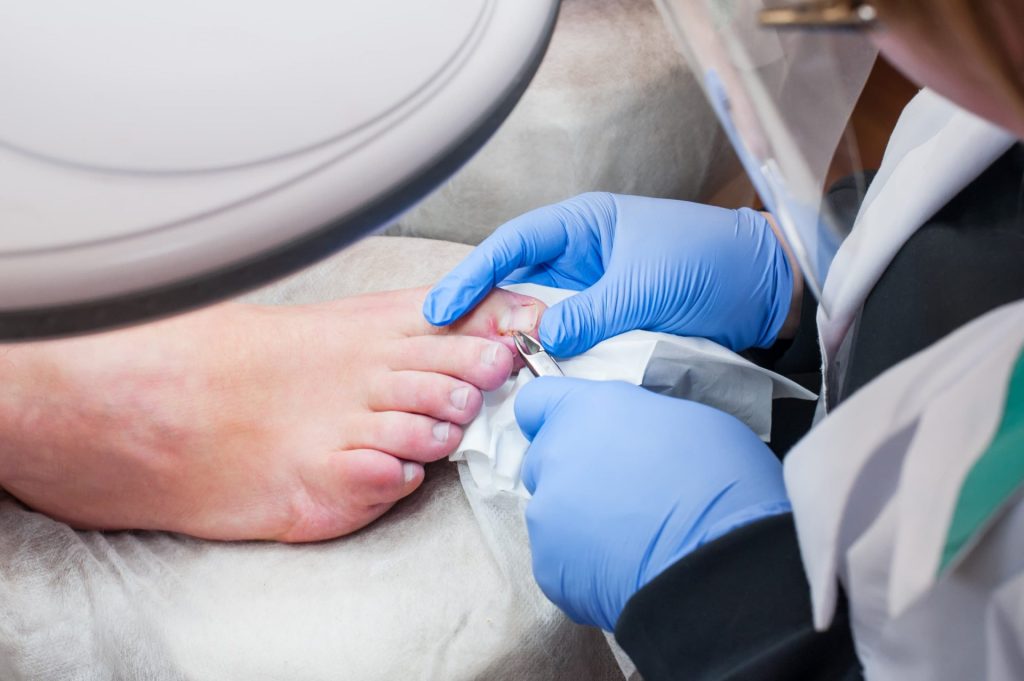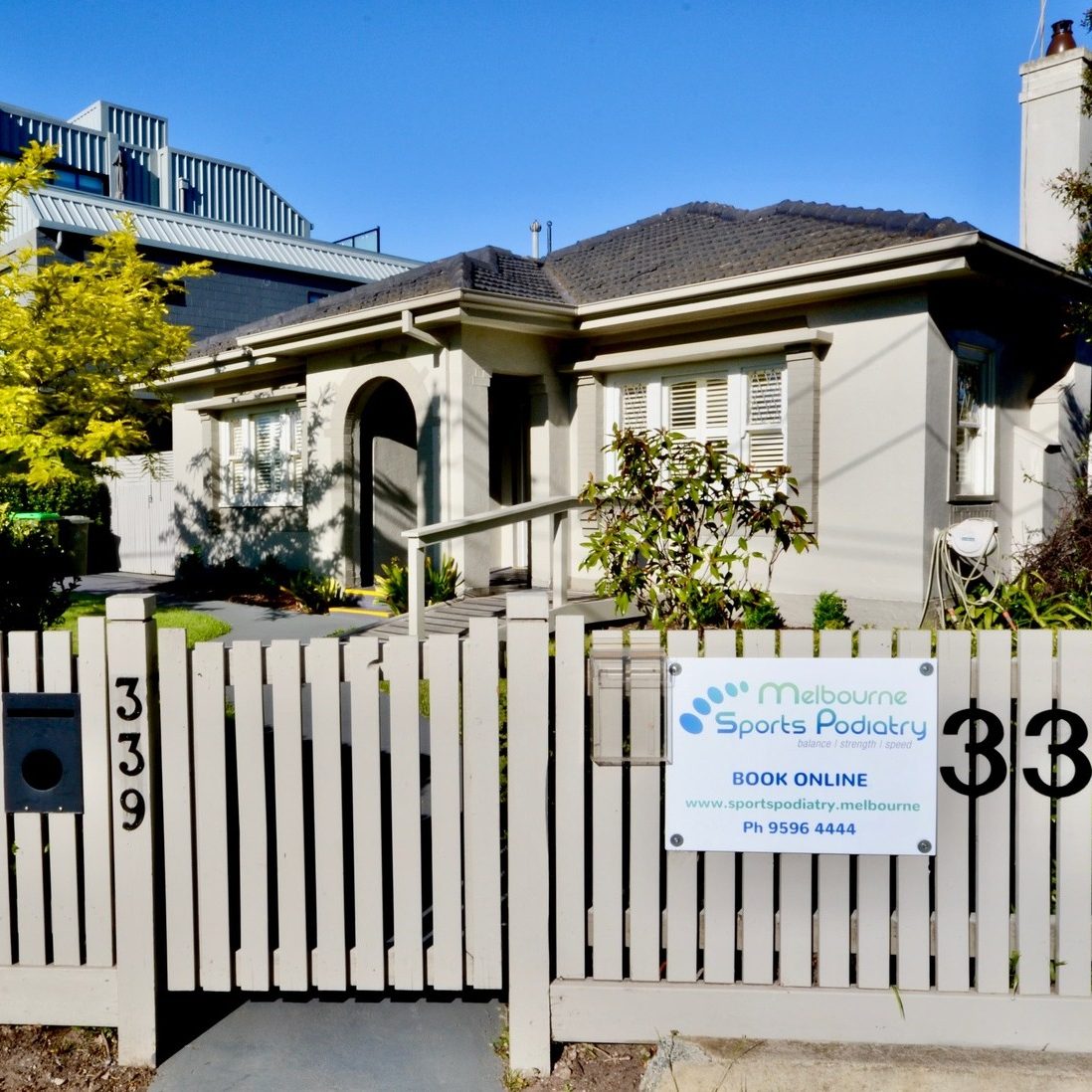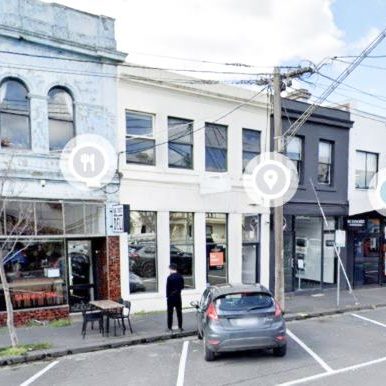An ingrown toenail is a painful problem whereby the nail starts to curve and pierce the tissue within the toe. Some of the symptoms presented may be:
- Pain
- Inflamed skin
- Swelling
- Discharge
- And eventually, infection
This often happens when there is trauma to the toe, you have trimmed your toenail too short, or you have an infection within the toe due to sweat and poor foot hygiene. Without early Ingrown Toenail Treatment, these issues tend to get worse. This is where it is sometimes better left to the professionals, such as Dr Steven Singh.
If you opt to go and see your podiatrist as the issue may have gotten worse, there is some information you could have on hand for your appointment, such as:
- When did you start experiencing symptoms?
- Do you have the symptoms all the time?
- What at-home treatments have you tried?
What are the symptoms and Causes of Ingrown toenails?
The symptoms:
Ingrown toenails can be painful, and they usually worsen in stages.
Early-stage symptoms include:
- The skin next to the nail becoming tender, swollen or hard.
- Pain when pressure is placed on the toe.
- Fluid building up around the toe.
- Visually you might see the actual toenail has started to "burrow" under the skin
If your toe becomes infected, symptoms may include:
- Red, swollen skin
- Pain
- Bleeding
- Oozing pus
- Overgrowth of skin around the toe
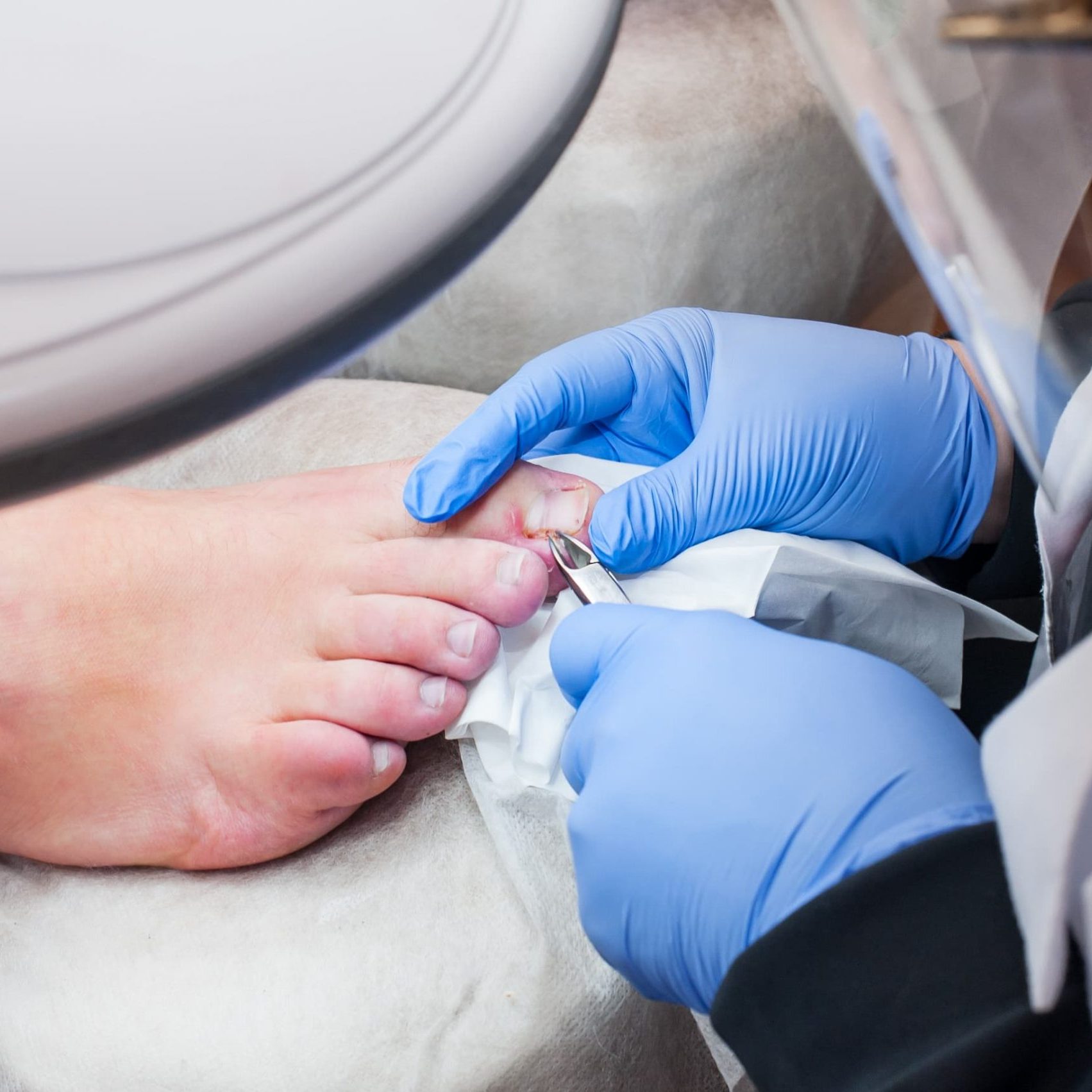
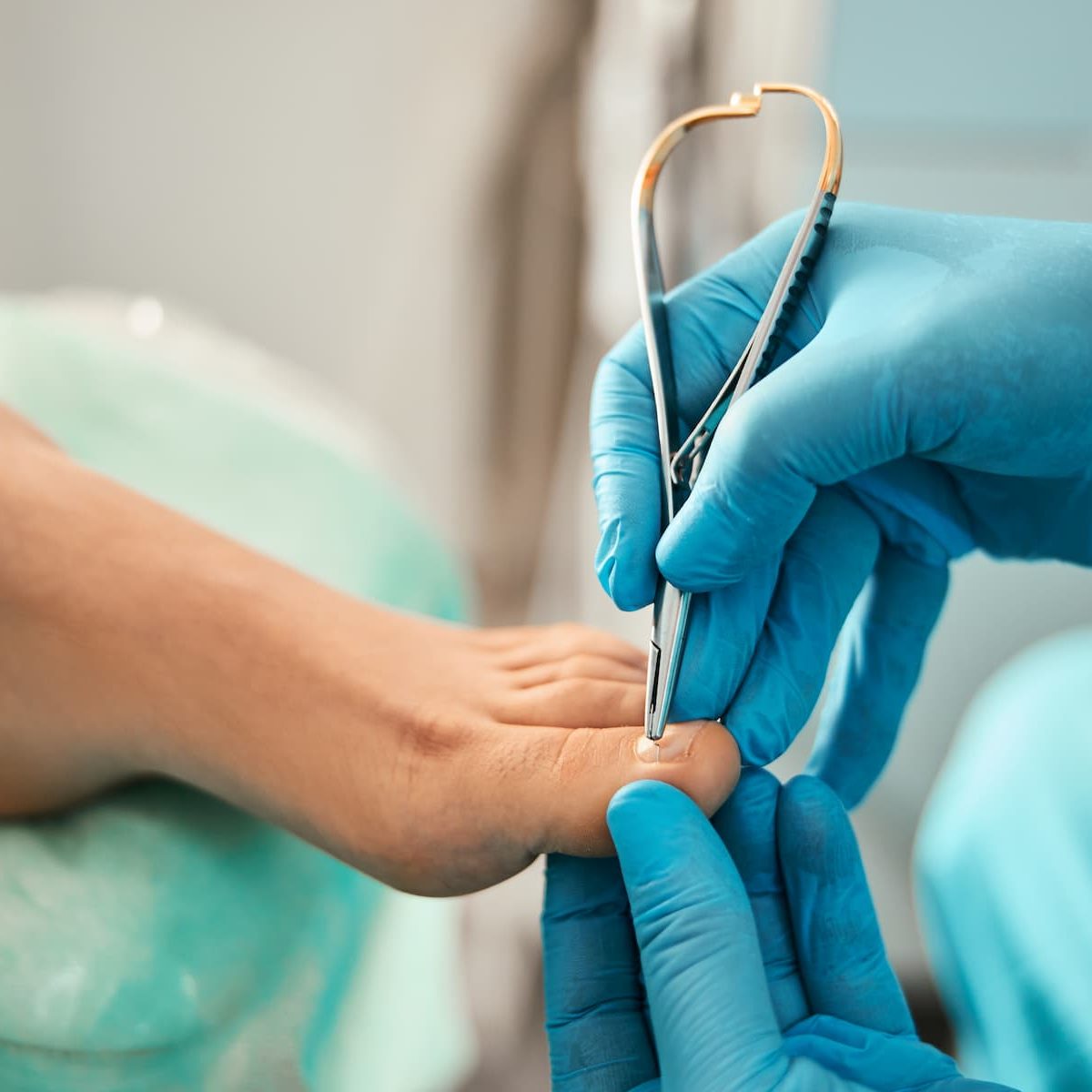
So we have covered the symptoms of an ingrown toenail, but what actually causes ingrown toenails?
Ingrown toenails occur in both men and women, across all ages and especially in adolescent males. People with sweaty feet are at a higher risk of developing this condition, as well as older folk as their toenails tend to thicken with age. However, there are many factors that can cause an ingrown toenail, such as:
- Cutting toenails incorrectly (Cut straight across, since angling the sides of the nail can encourage the nail to grow into the skin).
- Irregular, curved toenails.
- Footwear that places a lot of pressure on the big toes, such as socks and stockings that are too tight or shoes that are too tight, narrow, or flat for your feet.
- Toenail injury, including stubbing your toe, dropping something heavy on your foot, or kicking a ball repeatedly.
- Poor posture.
- Improper foot hygiene, such as not keeping your feet clean or dry.
- Genetic predisposition.
How to Fix an Ingrown Toenail:
Nonsurgical Treatment:
Sometimes, with ingrown toenails, if the problem is not too painful, we are able to treat and fix the problem with a standard Podiatrist consult. However, if the problem is left untreated, the situation can become far worse.
Follow the following steps if you are worried that you may be starting to develop an ingrown toenail:
- Soak the foot in warm salt water 1-2 times daily.
- Keep the foot dry during the rest of the day.
- Apply betadine into the nail sulcus.
- Wear comfortable shoes with adequate room for the toes. Consider wearing sandals until the condition clears up.
- If there is no improvement within 2-3 days, or if the condition worsens, make a booking online with Melbourne Sports Podiatry, or call one of our clinics directly for an appointment.
Surgical Treatment:
If the treatment of an ingrown toenail is left too long, or not taken care of correctly at home, professional treatment from a podiatrist is then often sought out. The condition is incredibly painful and will generally present with one or both sides of your nails being red and inflamed.
At Melbourne Sports Podiatry, we ensure that you are given a proper assessment. Depending on the severity of the situation, a treatment plan will then be outlined with the patient. With surgical treatment, the procedure is done in our rooms at either our Richmond Podiatry Clinic or the Brighton Podiatry Clinic.
If the toenail has excessive inflammation, swelling, pain and discharge present, the toenail is probably infected and that is when we decide to go the surgical route. A small portion of the nail will be surgically removed, as well as potentially a portion of the underlying nail bed, some of the adjacent soft tissues and even a part of the growth centre.
If your toenail is continuously struggling with an infection, removal of the entire nail may have to be advised. This is however for worst-case scenarios.
At Melbourne Sports Podiatry, Dr Steven Singh will be able to assist with a consultation to see if nonsurgical treatment will suffice, or if surgical treatment is necessary. Do not hesitate to reach out today.
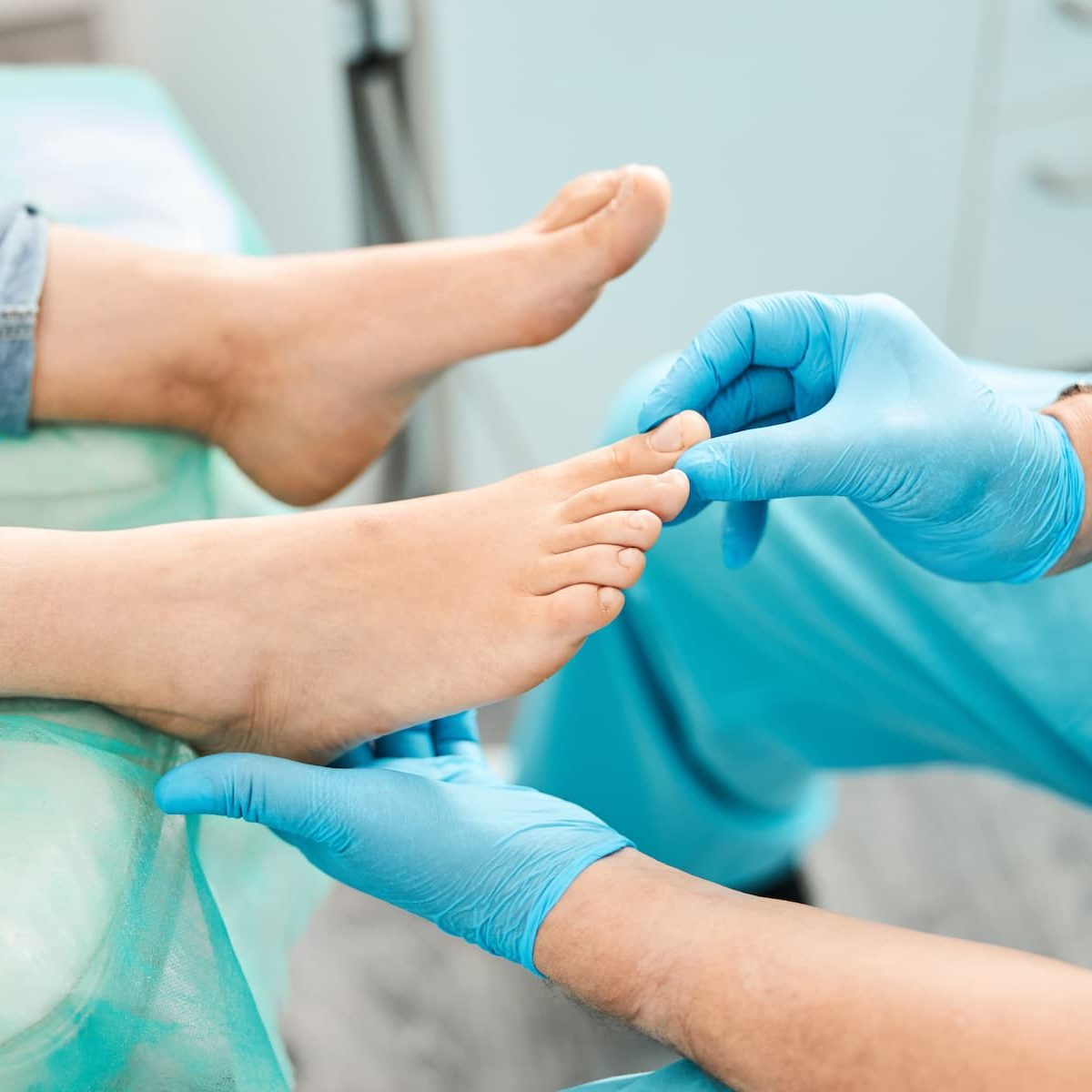
How to Prevent Ingrown Toenails:
Ingrown toenail prevention is a lot easier than you would imagine, and can be done by making a few small lifestyle adjustments, such as:
- When trimming your toenails, make sure to trim them straight across and ensure that the edges do not curve inwards.
- Avoid trimming the toenail too short
- Take care to wear proper fitting shoes, socks and/or tights.
- If you are working in hazardous conditions, ensure that you wear steel-toe boots (these too need to be the correct fit and size)
- Unfortunately, if your toenails are abnormally curved, or thicker than normal, surgery may be necessary to assist in the prevention of the problem recurring.
If you are suffering from an ingrown toenail and have attempted everything from rest to at-home remedies, but have found the problem has worsened or it is not clearing up, contact Melbourne Sports Podiatry today and we will ensure that you receive the best treatment for your condition.
We Accept All HICAPS Providers.
No referral is required.








